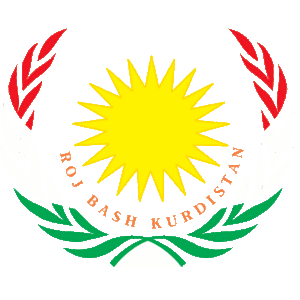But this region of outstanding natural beauty has also been scarred by war, and local officials are grappling with the problem of minefields left over from years of conflict.
The 1,100-square-kilometre (425-square-mile) reserve, known as the Halgurd Sakran National Park, encompasses Iraq's highest peaks along the border with Iran.
It has been listed as a national park by the northern autonomous Kurdish region for a year, but has inherited a legacy of violence in the region.
There are still minefields left from the 1980-88 Iraq-Iran war, and until recently Turkey and Iran shelled the nearby area, targeting Kurdish separatists from those countries who maintain rear bases in north Iraq.
The shelling may have stopped, but the minefields that remain have been cordoned off as non-governmental organisations work to de-mine the entire reserve.
Visitors making the trip to Halgurd Sakran pass a series of waterfalls, mountain ranges and a historical town, and on arrival at the park are greeted by lakes, springs and greenery.
Officials say the park was established as part of efforts to boost tourism, and that it has attracted the interest of researchers while also raising awareness towards local environmental protection.
"The goal in establishing this nature reserve is to protect the environment, and revert the civilisation and culture of the area to the way ancient peoples lived," said Abdulwahid Kuwani, head of a council supervising Halgurd Sakran.
He is also the mayor of Choman, the largest town in the area.
"In addition to that, this is a scientific project, so that universities in Iraq and Kurdistan can carry out research and study the environmental and zoological varieties found here.
"We also want to make this national park a tourism region for Kurdistan, Iraq and the Middle East to come and see wild animals."
Kurdish officials have sought to help locals who live within the national park's boundaries with breeding sheep and promoting cottage industries such as the sale of local handicrafts or dried pomegranates, figs and nuts to tourists.
They have barred hunting within the reserve, which contains species of wild deer, bears and tigers, and they have also banned the felling of trees.
"It is astonishing," Gunther Loiskandl, an Austrian wildlife expert, said of Halgurd Sakran.
"The region is rich in animal and plant varieties -- it has all that is required of a nature reserve," he told AFP.
"We must work for future generations: it is going to take time to restore the environment and animal life."
The three-province region of Kurdistan in north Iraq is widely seen as more successful than the rest of the country to the south, and often trumpets its reputation for better security, faster economic growth and increased stability.
In addition to vast oil reserves, which are the subject of a dispute with the federal government, the Kurdish region has its own parliament and enforces its own visa regime under which it is markedly easier to obtain a tourist visa.
Although there are no figures available for the number of visitors to the park itself, tourism numbers to the region are rising.
About 2.27 million domestic and foreign tourists made the trip last year, and already in the first six months of 2013, the region has welcomed 1.2 million visitors.
But those responsible for administering the national park are well aware that they not lacking in challenges, in addition to the danger from mines sewn long ago.
In August, officials found a dead tiger, but could not determine how the great cat died.
Shortly afterwards, another tiger was accidentally killed by villagers who put out poisoned meat in an attempt to kill wolves that had attacked their cattle.
On both occasions, park officials issued strong warnings to residents.
The park remains crucial to Iraqi Kurdistan's tourism strategy, which includes as one of its goals highlighting the beauty of the autonomous region's natural vistas.
Nadir Rosti, a spokesman for the region's tourism directorate, said there are now plans to expand Halgurd Sakran farther north, as well as creating new national parks and dedicating greater funding to existing nature reserves.
Welcome To Roj Bash Kurdistan


Kurdish park battles violent legacy while protecting the env
2 posts
• Page 1 of 1
Re: Kurdish park battles violent legacy while protecting the
The people who planted the minefields should be responsible for removing them
It should not be the job of others to risk life and limb removing them
It should not be the job of others to risk life and limb removing them

Good Thoughts Good Words Good Deeds
-

Anthea - Shaswar

- Donator

- Posts: 29496
- Images: 1155
- Joined: Thu Oct 18, 2012 2:13 pm
- Location: Sitting in front of computer
- Highscores: 3
- Arcade winning challenges: 6
- Has thanked: 6019 times
- Been thanked: 729 times
- Nationality: Kurd by heart
2 posts
• Page 1 of 1
Return to Kurdistan Today News (Only News)
Who is online
Registered users: Bing [Bot], Google [Bot]

















